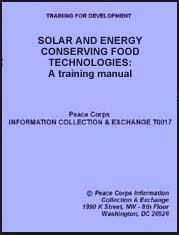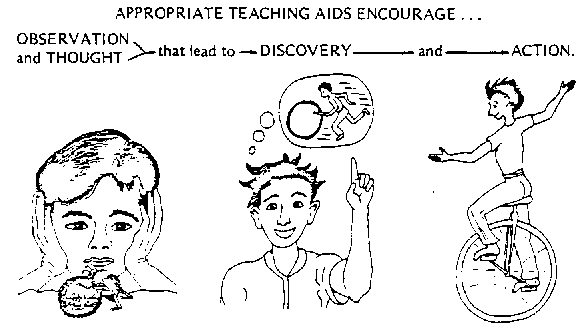
- (Peace Corps, 1984, 175 p.)
Storage of dried foods[edit | edit source]
OVERVIEW AND GOALS:
The use of correct storage procedures and methods is essential to prevent contamination or spoilage of preserved foods. In this session, participants learn appropriate ways of storing dried foods.
OBJECTIVES:
To identify the conditions required for proper food storage
To examine ways of attaining proper storage conditions
To learn steps to take in the storage of dried foods
RESOURCES:
Improved Food Drying and Storage Manual, Session 5
Small Farm Grain Storage
Putting Food By, Chapter 21
HANDOUTS:
"Storage of Dried Foods", Handout 14A
MATERIALS:
Newsprint and markers
Samples of dried foods that have spoiled
Several samples of containers not suitable for storage of dried foods
A variety of good storage containers
PREPARATION:
Prepare a fill-in-the-blank version on newsprint of Handout 14A, "Storage of Dried Foods." Leave blanks whenever appropriate so that participants can fill in their own answers.
PROCEDURES AND ACTIVITIES:
- (10 minutes) Introduction
Distribute the samples of spoiled food. Ask what could have caused the spoilage and how it could have been prevented.
- (45 minutes) Problems with Dried Food Storage
Form small groups according to region. Have each group discuss: methods for food storage in their community - problems with food storage - suggestions for dealing with the problems
Ask each group to take approximately ten minutes and devise an interesting and informative way of presenting the information regarding their region to the group.
Distribute newsprint and markers if needed. Have each group present their findings, and encourage comments and questions from the participants.
TRAINER'S NOTE
Some suggestions for presentations include using role plays, charts, pictures, or dramas. Refer to the list of ideas for teaching and sharing information developed by the participants in Session 12, "How People Learn".
- (20 minutes) Optimal Storage Conditions
On the basis of the previous discussion, guide the participants in determining the optimal conditions for food storage (clean, cool, dark, dry). Ask why each of the conditions is important. Ask for suggestions about ways to attain each condition. (i.e. use airtight containers, store underneath the house.)
- (35 minutes) Steps in Proper Food Storage
Review the information (prepared on newsprint) about food storage. Demonstrate the points discussed whenever possible.
Discuss storage containers as you display the examples to the group. (Refer to Preparation.) Ask participants to decide which containers are appropriate for storage of dried foods, and why. Ask people to suggest additional examples of appropriate storage devices for their own region.
- (10 minutes) Summary
Explain that each construction group will be responsible for storing food from their dryers as needed throughout the rest of the course. Encourage them to experiment with different containers and methods.
STORAGE OF DRIED FOODS
The following are guidelines to be used in the proper long-term storage of dried foods:
NOTE: For more information on steps 1-4, refer to Session 8, "The Use of Dried Foods."
- Test for dryness.
- Pasteurize (optional).
- Cool before storing.
- Condition (optional).
- Clean storage containers well.
- Try to anticipate the eventual use of dried foods and store them in corresponding quantities in either paper or food-grade plastic bags (i.e., the approximate amount of a mixture of vegetable to go into a soup) before storing in a larger moisture-proof container. This not only makes using the foods convenient, but will also help to prevent exposing a large batch of dried food to moist air when taking out a small quantity for immediate use.
- Don't combine strong smelling foods in the same container.
- Store herbs with their leaves intact. This will minimize loss of flavor and aroma which occurs when more surface area is exposed to the air.
- Make sure only food-grade materials come in direct contact with the food. (Garbage bags and most colored plastic bags should be avoided. When in doubt, don't use it!)
10. Identify all containers. Include the date and contents.
11. Rotate your stock of dried foods. When adding a new batch, use up the oldest foods first.
12. Roll leathers in plastic before storing in an airtight container.
13. At the first sign of moisture inside the storage container, remove any pieces that appear spoiled and return the rest to the dryer.
14. Don't store foods for more than a year, if possible, as the flavor, aroma and nutritional value slowly deteriorate during storage.
15. Make sure your storage containers are moisture proof (this will also ensure that they keep out insects, rodents and dirt).
16. To test whether a container is moisture proof:
Fill with water and put the lid on. Shake the container or turn upside down and watch to see whether any moisture escapes. If not, it passes the test!
17. To moisture-proof containers that leak around the lid, dip a strip of cloth in melted wax and quickly wrap it around the space between the container and its lid.
18. Some suggestions for suitable storage containers include: glass jars, "tin" cans, gourds and ceramic containers with external glazing. Plastic or paper bags are not moisture proof and, therefore, should only be used for separating small quantities of food inside a large container.
19. Store in the coolest place available, (i.e. under the house, in a storage shed that is protected from the sun and has good ventilation, near or on the kitchen floor and as far from the heat of the stove as possible.) Ideally, storage temperatures should not exceed 15ºC.
STORAGE
